Paclitaxel induces lymphatic endothelial cells autophagy to promote metastasis
- PMID: 31863036
- PMCID: PMC6925245
- DOI: 10.1038/s41419-019-2181-1
Paclitaxel induces lymphatic endothelial cells autophagy to promote metastasis
Abstract
Cytotoxic therapy for breast cancer inhibits the growth of primary tumors, but promotes metastasis to the sentinel lymph nodes through the lymphatic system. However, the effect of first-line chemotherapy on the lymphatic endothelium has been poorly investigated. In this study, we determined that paclitaxel, the anti-cancer drug approved for the treatment of metastatic or locally advanced breast cancer, induces lymphatic endothelial cell (LEC) autophagy to increase metastases. While paclitaxel treatment was largely efficacious in inhibiting LEC adhesion, it had no effect on cell survival. Paclitaxel inhibited LEC migration and branch point formation by inducing an autophagy mechanism independent of Akt phosphorylation. In vivo, paclitaxel mediated a higher permeability of lymphatic endothelium to tumor cells and this effect was reversed by chloroquine, an autophagy-lysosome inhibitor. Despite a strong effect on reducing tumor size, paclitaxel significantly increased metastasis to the sentinel lymph nodes. This effect was restricted to a lymphatic dissemination, as chemotherapy did not affect the blood endothelium. Taken together, our findings suggest that the lymphatic system resists to chemotherapy through an autophagy mechanism to promote malignant progression and metastatic lesions. This study paves the way for new combinative therapies aimed at reducing the number of metastases.
Conflict of interest statement
The authors declare that they have no conflict of interest.
Figures
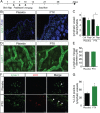

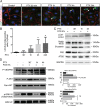
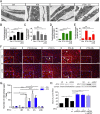
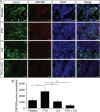
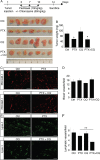
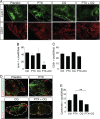
Similar articles
-
Autophagy inhibition with chloroquine reverts paclitaxel resistance and attenuates metastatic potential in human nonsmall lung adenocarcinoma A549 cells via ROS mediated modulation of β-catenin pathway.Apoptosis. 2019 Jun;24(5-6):414-433. doi: 10.1007/s10495-019-01526-y. Apoptosis. 2019. PMID: 30767087
-
RGS5+ lymphatic endothelial cells facilitate metastasis and acquired drug resistance of breast cancer through oxidative stress-sensing mechanism.Drug Resist Updat. 2024 Nov;77:101149. doi: 10.1016/j.drup.2024.101149. Epub 2024 Sep 6. Drug Resist Updat. 2024. PMID: 39306871
-
Targeting VEGFR-3/-2 signaling pathways with AD0157: a potential strategy against tumor-associated lymphangiogenesis and lymphatic metastases.J Hematol Oncol. 2017 Jun 19;10(1):122. doi: 10.1186/s13045-017-0484-1. J Hematol Oncol. 2017. PMID: 28629427 Free PMC article.
-
Paclitaxel therapy promotes breast cancer metastasis in a TLR4-dependent manner.Cancer Res. 2014 Oct 1;74(19):5421-34. doi: 10.1158/0008-5472.CAN-14-0067. Cancer Res. 2014. PMID: 25274031 Free PMC article.
-
Quercetin suppresses the mobility of breast cancer by suppressing glycolysis through Akt-mTOR pathway mediated autophagy induction.Life Sci. 2018 Sep 1;208:123-130. doi: 10.1016/j.lfs.2018.07.027. Epub 2018 Jul 17. Life Sci. 2018. PMID: 30025823
Cited by
-
Editorial: Autophagy modulation in cancer treatment utilizing nanomaterials and nanocarriers.Front Oncol. 2023 Jun 6;13:1217401. doi: 10.3389/fonc.2023.1217401. eCollection 2023. Front Oncol. 2023. PMID: 37346074 Free PMC article. No abstract available.
-
The Crosstalk between Autophagy and Nrf2 Signaling in Cancer: from Biology to Clinical Applications.Int J Biol Sci. 2024 Nov 11;20(15):6181-6206. doi: 10.7150/ijbs.103187. eCollection 2024. Int J Biol Sci. 2024. PMID: 39664581 Free PMC article. Review.
-
Triple negative breast cancer: approved treatment options and their mechanisms of action.J Cancer Res Clin Oncol. 2023 Jul;149(7):3701-3719. doi: 10.1007/s00432-022-04189-6. Epub 2022 Aug 17. J Cancer Res Clin Oncol. 2023. PMID: 35976445 Free PMC article.
-
Lymphatic immunomodulation using engineered drug delivery systems for cancer immunotherapy.Adv Drug Deliv Rev. 2020;160:19-35. doi: 10.1016/j.addr.2020.10.004. Epub 2020 Oct 12. Adv Drug Deliv Rev. 2020. PMID: 33058931 Free PMC article.
-
BCG vaccination policy and preventive chloroquine usage: do they have an impact on COVID-19 pandemic?Cell Death Dis. 2020 Jul 8;11(7):516. doi: 10.1038/s41419-020-2720-9. Cell Death Dis. 2020. PMID: 32641762 Free PMC article.
References
MeSH terms
Substances
LinkOut - more resources
Full Text Sources
Medical

